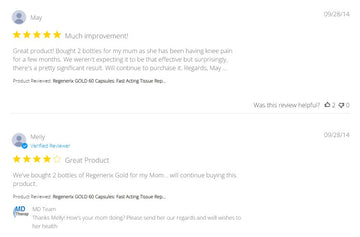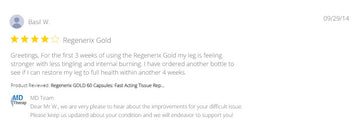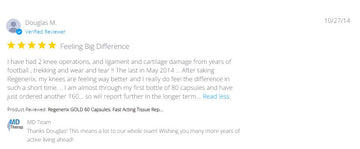Fast Recovery Solutions So You Don’t Miss Your Weekend Hikes
by MD therapeutics on Aug 16, 2025
Fast Recovery Solutions So You Don’t Miss Your Weekend Hikes
Weekend hikes are more than just exercise—they’re a ritual of freedom, nature, and stress relief. But sore muscles, aching joints, or minor sports injuries can derail your plans. If you’re searching for fast muscle recovery for athletes and active hikers alike, the good news is that several evidence-based solutions can help you bounce back in time for the trail.
This guide covers the best recovery tools for hikers, fast-acting therapies, supplements, and practical tips that can keep you moving without losing weekends to pain or fatigue.
Why Fast Recovery Matters for Active Individuals
Missing a hike due to soreness is frustrating. For athletes and active adults, consistent recovery matters because:
-
It prevents minor aches from becoming chronic injuries
-
It maintains performance and endurance
-
It reduces the mental barrier of pain before activity
-
It helps you stay committed to long-term fitness goals
The right recovery solutions don’t just help after activity—they prepare your body for the next one.
1. Percussive Therapy for Muscle Relief
One of the most effective tools for quick recovery from sports injuries and muscle soreness is percussive therapy.
Devices like the Therabody Theragun deliver rapid bursts of pressure to muscle tissue, improving circulation, breaking down tight knots, and reducing soreness. According to the Therabody official site, regular use can speed up muscle recovery after strenuous activity, making it ideal for hikers dealing with tight calves, quads, or back strain.
How to use it:
-
Apply 1–2 minutes per major muscle group after a hike
-
Focus on sore areas, keeping the device moving to avoid discomfort
-
Use pre-hike for muscle activation and post-hike for recovery
2. Daily Joint Support Supplements
Muscle soreness is one thing, but joint discomfort is often what sidelines hikers. That’s where daily joint support supplements for active individuals can help.
Regenerix Gold
A popular choice among hikers and athletes is Regenerix Gold. Unlike standard glucosamine or chondroitin supplements, it combines:
-
Hydrolyzed collagen (Type II) – supports cartilage health and joint repair
-
Five traditional herbs – known for easing inflammation and improving mobility
Many users report noticeable improvement within 1–4 weeks. For active individuals, this can mean faster recovery between hikes and long-term support for “wear and tear” conditions.
Best for: Active adults, weekend warriors, and those managing long-term joint stress.
Other supplement options include omega-3 fatty acids, curcumin, and MSM, but these often require longer periods of consistent use before noticeable effects.
3. Topical Relief for Soreness
When you need topical muscle relief for soreness, creams and gels provide a targeted option. Look for:
-
Menthol or camphor-based rubs (cooling relief for acute soreness)
-
Capsaicin cream (warming effect for stiffness)
-
Magnesium sprays (for cramp relief)
These aren’t long-term fixes, but they can be lifesavers when you need to get moving fast.
4. Active Recovery Techniques
Rest doesn’t always mean complete stillness. Active recovery can help flush out metabolic waste, improve blood flow, and restore mobility.
-
Light cycling, swimming, or yoga
-
Dynamic stretching after activity
-
Foam rolling for tight fascia
Spending just 15 minutes on active recovery can reduce soreness the next day significantly.
5. Cold and Heat Therapy
Two classic approaches still hold up today:
-
Ice baths or cold packs – reduce swelling and inflammation after strenuous activity
-
Heat packs or warm baths – relax tight muscles and improve blood flow before activity
Alternating cold and heat (contrast therapy) is particularly effective for stubborn soreness.
6. Nutrition and Hydration
Your muscles and joints can’t recover if they don’t have the right fuel.
-
Protein – for muscle repair (aim for 20–30g after activity)
-
Collagen + Vitamin C – supports joint and connective tissue
-
Electrolytes – prevent cramps and aid recovery
-
Antioxidants (berries, green tea, turmeric) – reduce inflammation
Hydration plays a direct role in joint lubrication and muscle function, making it a non-negotiable for hikers.
Putting It All Together: A Weekend Hiker’s Recovery Plan
Here’s how you could structure a simple, effective routine to avoid missing your hikes:
Immediately after hiking:
-
Rehydrate and eat a protein-rich snack
-
Use Theragun or foam rolling for sore muscles
-
Apply a cooling topical cream on hotspots
Daily:
-
Take a joint support supplement like Regenerix Gold
-
Perform 10–15 minutes of mobility or stretching exercises
-
Alternate heat/cold therapy if soreness lingers
Before the next hike:
-
Light warm-up with percussive therapy
-
Gentle dynamic stretches for hips, calves, and hamstrings
Conclusion
Missing weekend hikes due to soreness or joint discomfort doesn’t have to be the norm. By combining tools like Therabody Theragun percussive therapy, daily joint support supplements such as Regenerix Gold, topical relief solutions, and smart recovery practices, you can keep your body ready for the trail.
The key is consistency: don’t wait until pain sidelines you—build recovery into your routine so every hike feels possible.
- active lifestyle,
- best recovery tools for hikers,
- collagen supplement,
- fast muscle recovery,
- fast recovery,
- hiking recovery,
- joint support supplements,
- muscle soreness relief,
- outdoor fitness,
- percussive therapy,
- quick recovery from sports injuries,
- Regenerix Gold,
- Therabody Theragun,
- topical muscle relief,
- weekend hikes



